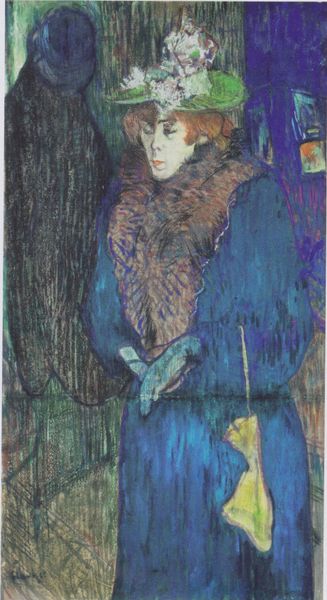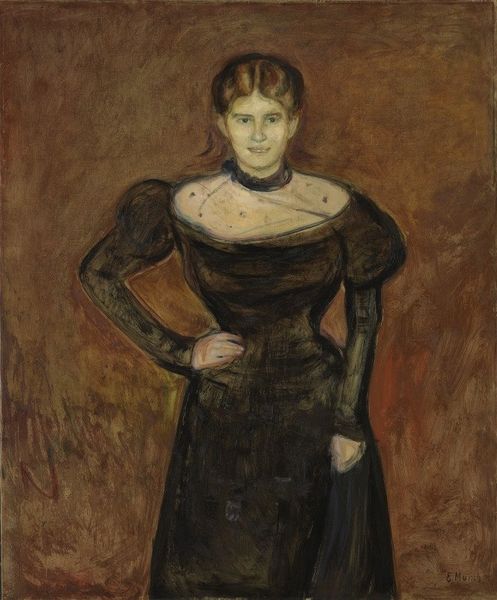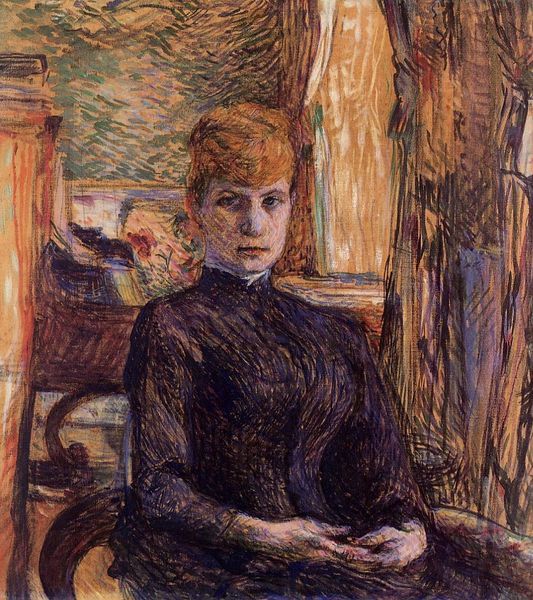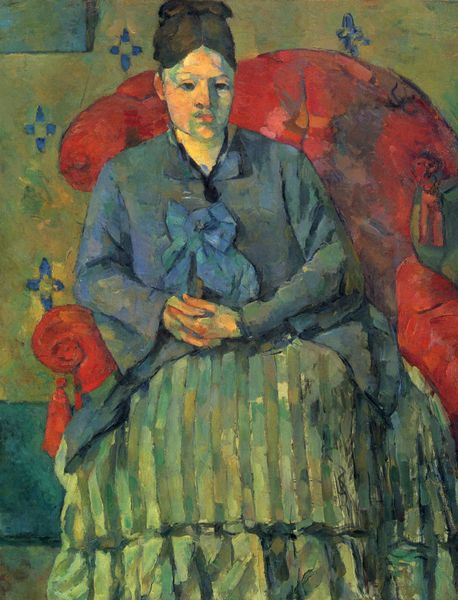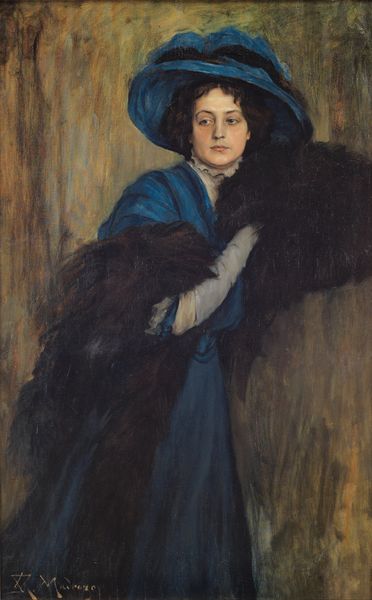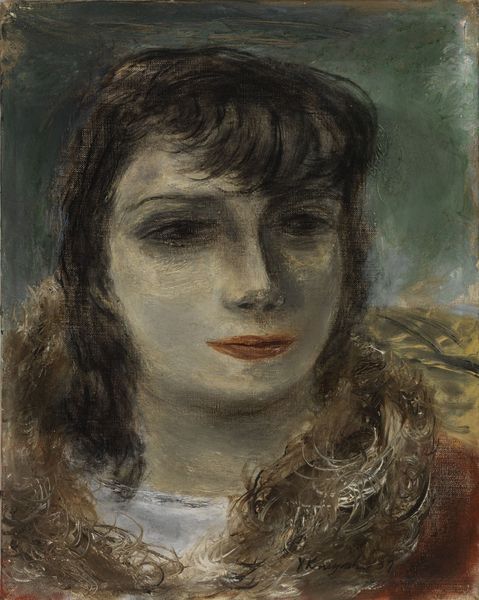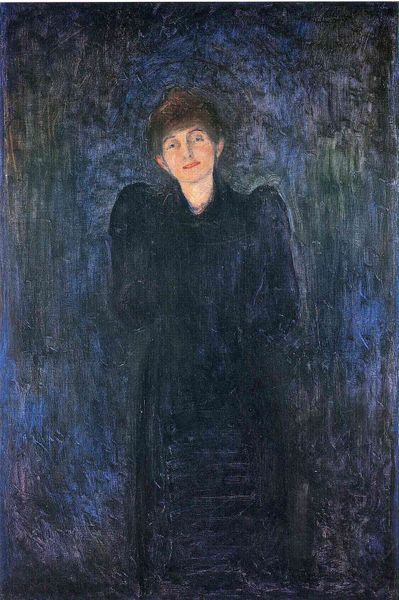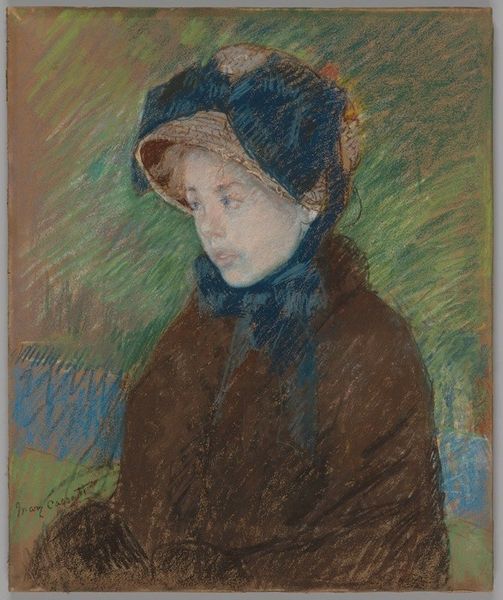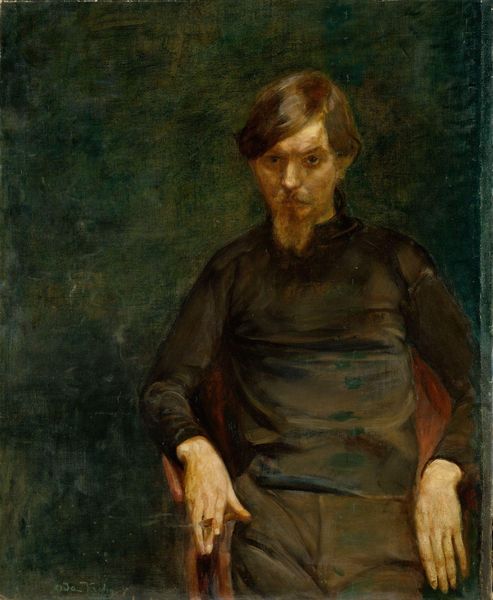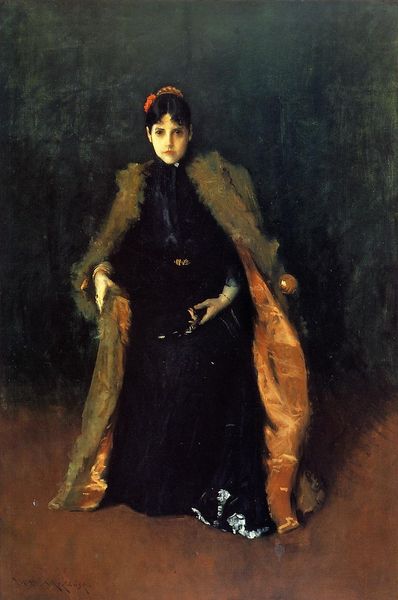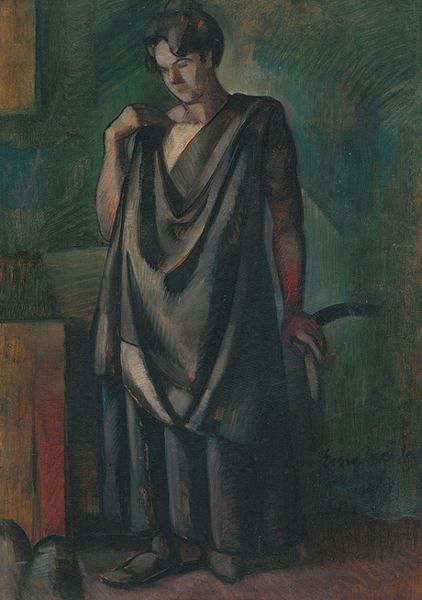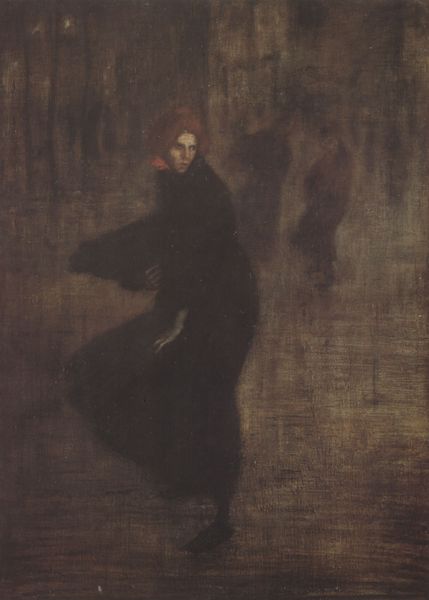
Dimensions: 73.4 cm (height) x 59.4 cm (width) (Netto), 86.5 cm (height) x 72.1 cm (width) x 8.9 cm (depth) (Brutto)
Curator: Edvard Munch’s “Lady in Black,” painted in 1891 and housed at the SMK, presents a captivating figure. What are your immediate thoughts? Editor: Gloomy, somber. The darkness of the figure’s dress nearly consumes her, and the brushwork seems agitated, almost violently applied in places. Curator: The black attire definitely carries weight, doesn't it? Black, historically, has symbolized mourning, solemnity, but also power, elegance. Munch's symbolist leanings might suggest more than simple bereavement. The woman’s pale face stands in stark contrast, perhaps signifying vulnerability or isolation within the confines of social expectation. Editor: It’s that contrast that grabs me, too. Look at the green block in the foreground – is that a table? It’s barely defined, yet the severe geometry disrupts the overall flow. And consider the impasto, so heavy around the edges, framing her as if trapped. Is it just about psychological pressure, or could the woman’s emotional state, as visually communicated by line and shape, be what generates the dramatic tension here? Curator: It's interesting you mention the framing. The painting definitely resonates with Northern Renaissance portraiture; but it breaks with the standard composition that would emphasize clarity or nobility. She's enmeshed with the background; she merges. It invites contemplation on themes of identity and its dissolution into the surrounding context. Notice her almost pleading expression… it is as if she expects more than the rigid expectations that define her existence. Editor: Pleading, perhaps, but her gaze also feels accusatory. Her eyes are in focus, inviting but unwavering and direct, and they disrupt what otherwise would seem like visual or atmospheric effects from background and shadow. The very deliberate composition highlights this disruption between her appearance and the style and the materials involved in the presentation. Curator: You raise an interesting point. It reflects Munch's break from academic portraiture. He's using these elements – color, composition, texture – to portray inner turmoil, not just physical likeness. She isn’t just a woman in a dress; she's a landscape of the soul. Editor: Precisely. It's about the expressive capabilities inherent in the painting's form, a direct manifestation of the sitter’s psychology through artistic language. Curator: A powerful visual encoding of inner life! Editor: I’m glad you appreciate what I think is key to a formal understanding of this haunting painting.
Comments
No comments
Be the first to comment and join the conversation on the ultimate creative platform.
